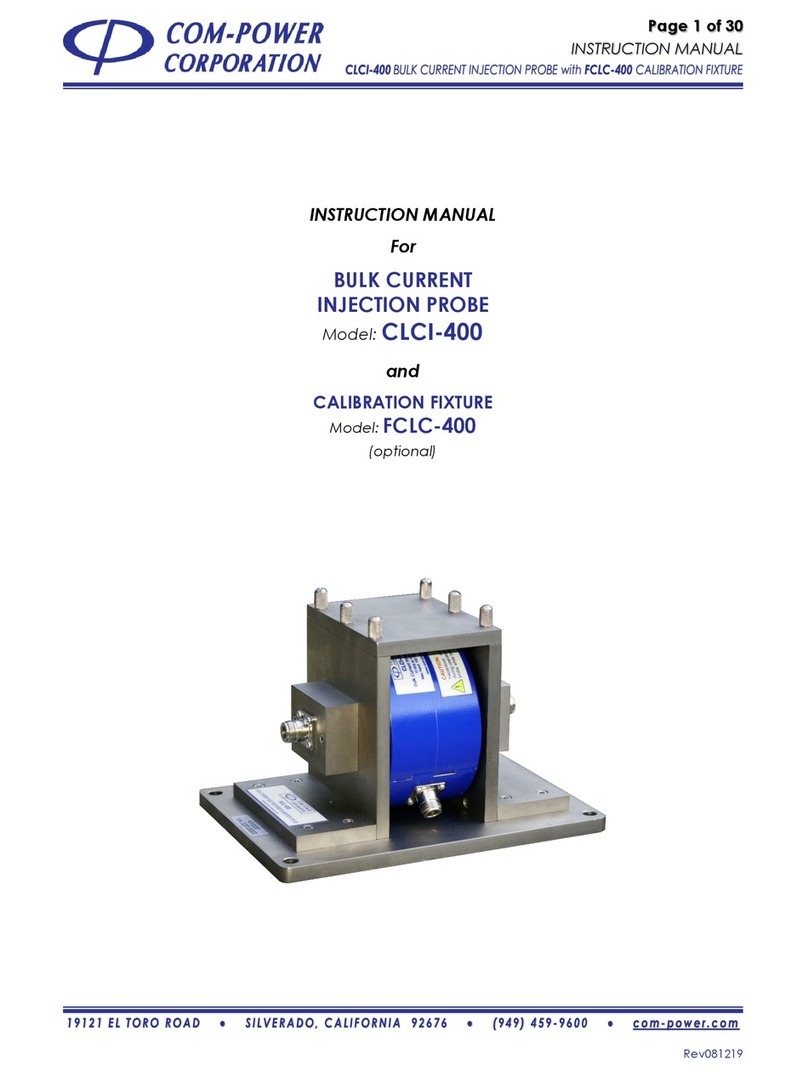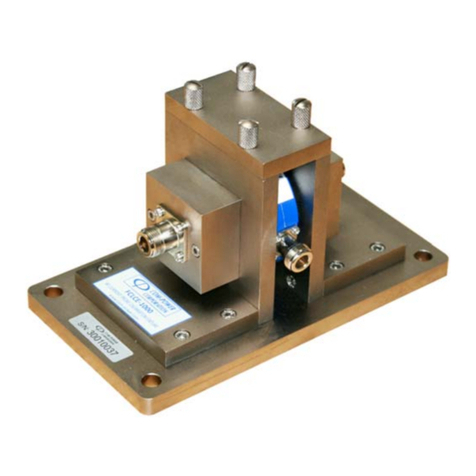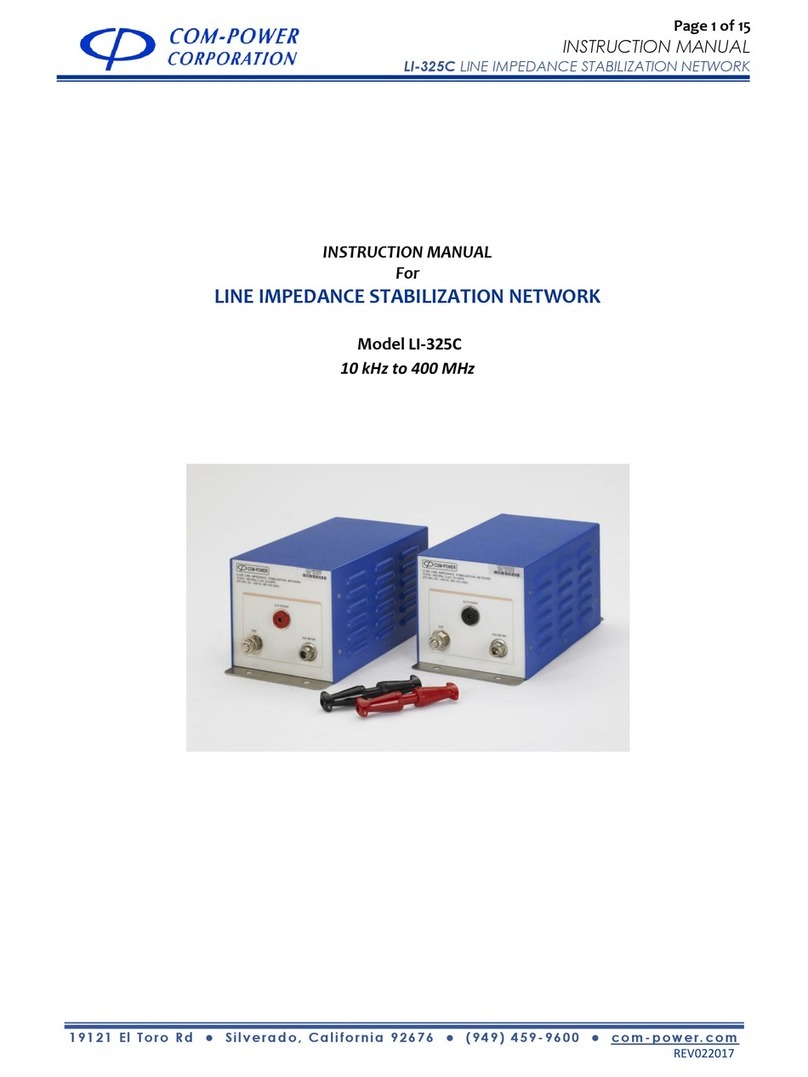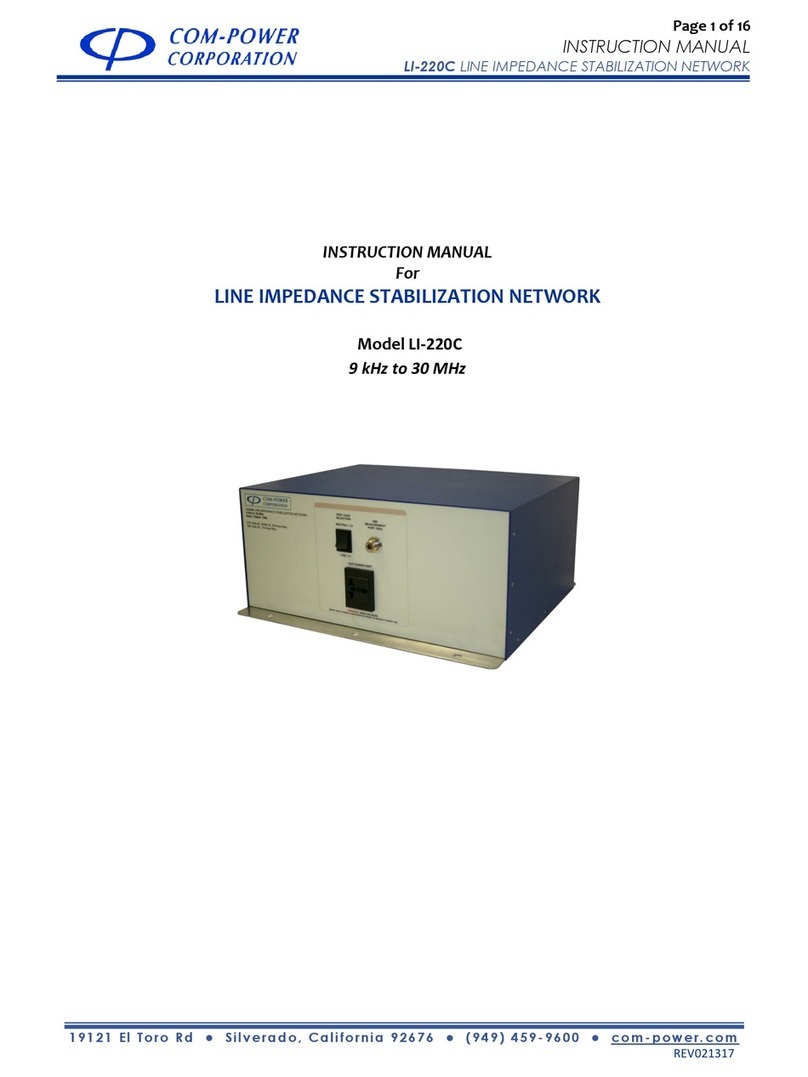Page 7 of 18
INSTRUCTION MANUAL
S E C T I O N 3 -P RO D UC T I N F O RM A T IO N
Rev090519
The hazard symbols appearing on the product exterior are defined below.
The yellow triangle with an exclamation mark indicates the presence of
important operating and/or maintenance (servicing) instructions in the
literature accompanying the product.
The following warnings/caution statements must be adhered to in order to
ensure safe operation of the product.
CAUTION:
Hazardous Voltages present during operation. Do not handle probe
while test is in progress.
The following safety instructions have been included in compliance with
safety standard regulations. Please read them carefully.
•READ AND RETAIN INSTRUCTIONS - Read all safety and operating instructions
before operating the instrument. Retain all instructions for future reference.
•HEED WARNINGS - Adhere to all warnings on the instrument and operating
instructions.
•FOLLOW INSTRUCTIONS - Follow all operating and use instructions.
•WATER AND MOISTURE - Do not use the instrument near water.
•HEAT - The instrument should be situated away from heat sources such as heat
registers or other instruments which produce heat.
•CLEANING –Clean the instrument outside surfaces of the device with a soft, lint-
free cloth. If necessary, a mild detergent may be used.
•NON-USE PERIODS - Unplug the power cords of the instrument when it will be left
unused for a long period of time.
•OBJECT AND LIQUID ENTRY - Take care that objects do not fall into the instruments
and that liquids are not spilled into the enclosure through openings.
•DEFECTS AND ABNORMAL STRESS - Whenever it is likely that the normal operation
has been impaired, make the equipment inoperable and secure it against further
operation.
•SITTING OR CLIMBING - Do not sit or climb upon the instrument or use it as a step
or ladder.
•ENVIRONMENTAL CONDITIONS -This equipment is designed for indoor use.
Ambient temperature range during operation should be between 5° C to 40° C.
•STORAGE AND PACKAGING - The device should only be stored at a temperature
between –25 and +70 °C. During extended periods of storage, protect the device
from dust accumulation. The original packaging should be used if the device is
transported or shipped again. If the original packaging is no longer available, the
device should be packed carefully to prevent mechanical damage.































